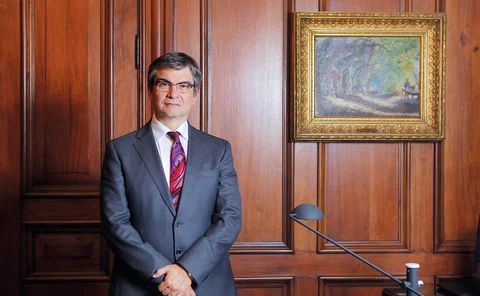Communication
People: World Bank appoints Gill as chief economist
Two members join Bank of Japan board, and senior IMF officials Lester and Rice step down
Quarterly forecast updates are the norm at central banks
Forecasting tends to be a collaborative exercise between staff and policy-makers
Chile’s Marcel stresses importance of trust
Former central bank governor warns monetary and fiscal policies will diverge
CBDC and bank intermediation in the eurozone
An assessment of the impact different ‘digital euro’ designs related to remuneration and usage limits could have on the banking system, including during times of stress*
Swiss central bank defends board structure
Think-tank suggested governing board was “susceptible to group think” in April report
What is the right size for a central bank board?
There is greater consensus for smaller boards in theory than in practice
Riksbank was right to use negative rates, say former central bankers
As ECB loosened policy, Swedish central bank lacked any credible alternative, Flug and Honohan conclude
Communications Benchmarks 2022 – executive summary
Key findings of the 2022 report, including the ongoing shift to social media and the impact of Covid-19
Tackling private-sector debt in the wake of the pandemic
Navigating Covid-19 debt is more of a challenge amid gathered storms of inflation and war, write Roong Mallikamas and Benjamin Weigert
Bernanke says Fed acted too slowly on inflation
Former Fed chair argues forward guidance hampered Fed’s response to rising prices
Social media ahead of traditional comms for central banks
High income institutions still skewed towards traditional channels
Central banks use wide array of external comms channels
Institutions employ about 10 media formats on average, and almost all use social media
Central bank websites vary greatly in popularity
Some get hundreds of page views per month, while others get millions
Private sector tools often used to shape comms strategies
Meltwater, Hootsuite and Fuseworks among named software providers
Email main channel for central banks’ two-way communication
A majority of central banks interact with the public through social media platforms
Early comms involvement in policy raises effectiveness
Teams involved in earlier stages of policy report communications are more successful
Central banks use multiple channels for internal comms
Email and platforms developed in-house are top channels, but many others are also common
Central banks offer wide range of comms training courses
Many train communications staff in areas such as writing, public speaking and social media
Many central banks ‘layer’ news for different audiences
Techniques include use of differing language, visual and video presentation, and data release
Central bank comms staff earn $40,000 on average
Data shows wide disparity across institutions and income groups
Wide variation in comms staff numbers
Smallest communications team has just two members, and the largest over 100
Maintaining trust is top focus of comms teams
Benchmarking data sheds light on how central banks measure the effectiveness of communications
Most central banks are bilingual communicators
Only a handful communicate in three languages, but it is common to translate at least some documents
Media relations is biggest job for comms teams
But website, social media and internal comms also account for significant portions of time









